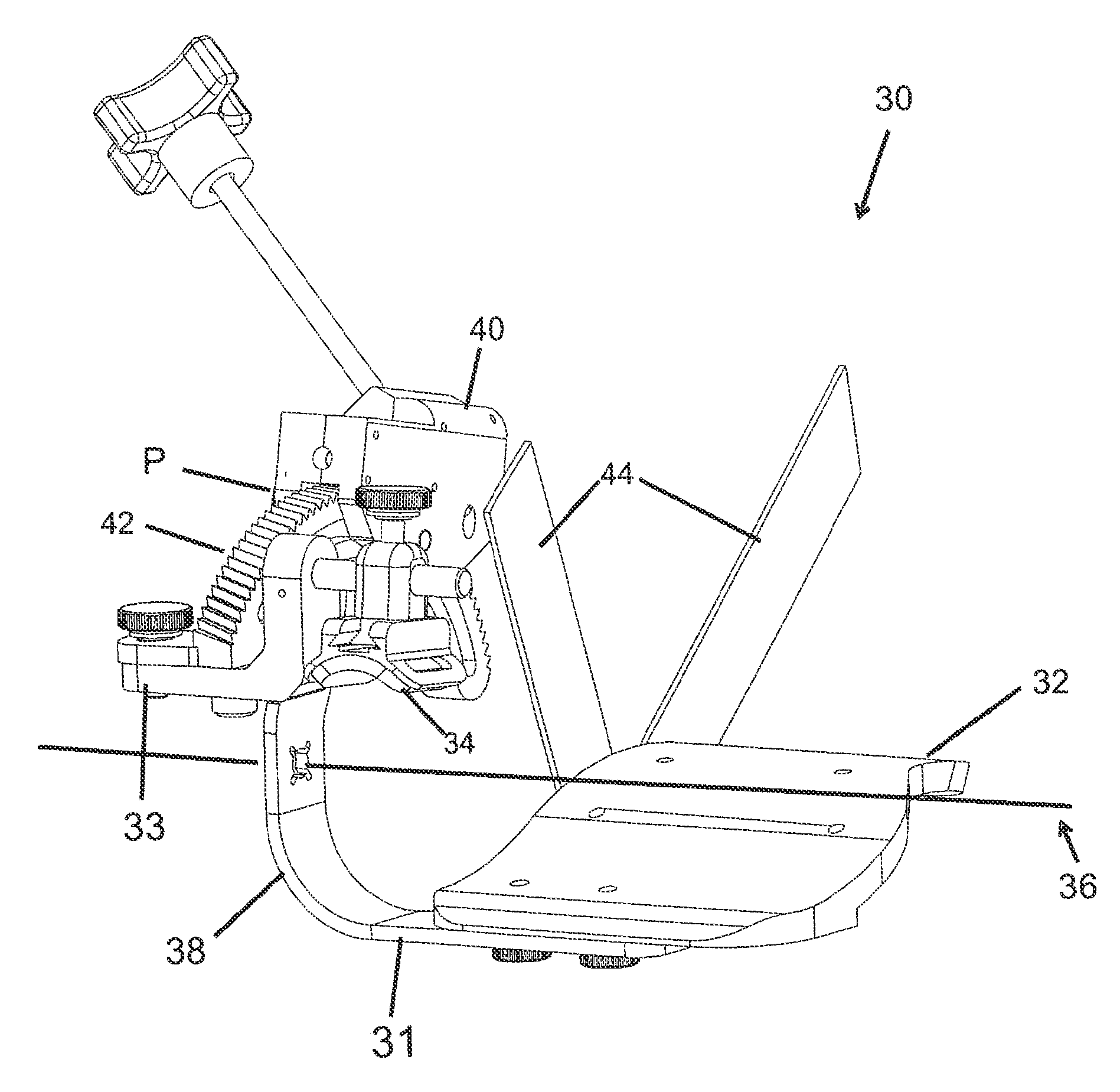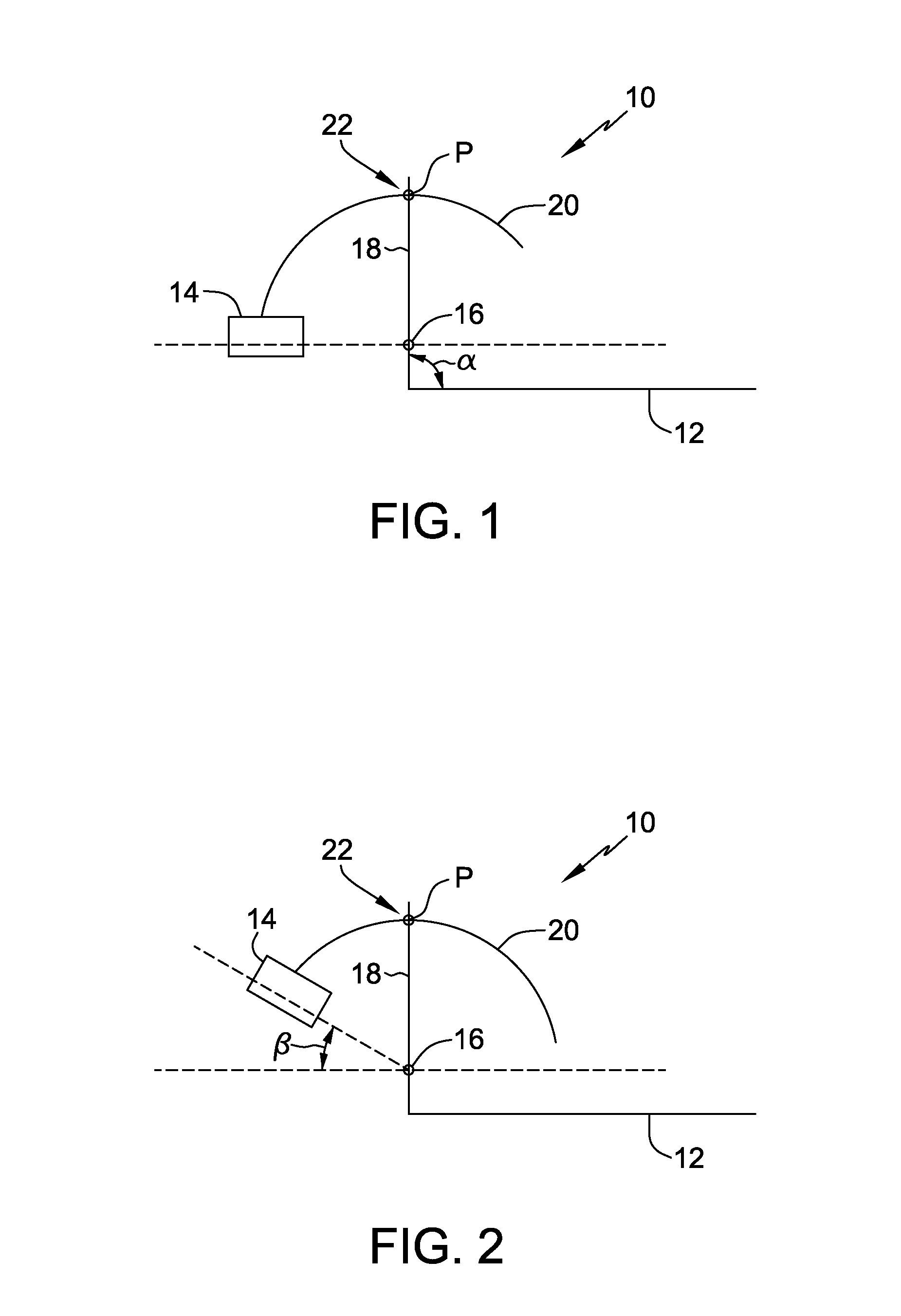Range of motion device
a range of motion and joint technology, applied in the field of adjustable orthoses for stretching tissue, can solve the problems of joint and surrounding tissue not being able to achieve a wide range of motion without risking damage to the joint or surrounding tissue, and the range of motion through which the body moves may chang
- Summary
- Abstract
- Description
- Claims
- Application Information
AI Technical Summary
Benefits of technology
Problems solved by technology
Method used
Image
Examples
Embodiment Construction
[0031]The present invention relates to an orthosis for causing a joint to flex or move through a range of motion. One exemplary application of an orthosis of the present invention is in treatment of a toe of a patient's foot. While the invention is believed to provide significant improvements in this area of treatment, it may likewise be of benefit in treating other joints, such as ankles, knees, hips, fingers, wrists, elbows, shoulders, or the spine.
[0032]Furthermore, while many examples provided herein may illustrate the invention used to treat the metatarsal and proximal phalanx of the toe, these examples are non-limiting on other joints of the toe that also may be treated by the present invention. It is understood by those skilled in the art that the other joints of the toe may be flexed or extended, without departing from the spirit and scope of the invention. Additionally, the present invention is described in use on the “big” toe or hallux on the foot. Thus, it should be unde...
PUM
| Property | Measurement | Unit |
|---|---|---|
| constant radius of curvature | aaaaa | aaaaa |
| radius of curvature | aaaaa | aaaaa |
| orthosis axis of rotation | aaaaa | aaaaa |
Abstract
Description
Claims
Application Information
 Login to View More
Login to View More - R&D
- Intellectual Property
- Life Sciences
- Materials
- Tech Scout
- Unparalleled Data Quality
- Higher Quality Content
- 60% Fewer Hallucinations
Browse by: Latest US Patents, China's latest patents, Technical Efficacy Thesaurus, Application Domain, Technology Topic, Popular Technical Reports.
© 2025 PatSnap. All rights reserved.Legal|Privacy policy|Modern Slavery Act Transparency Statement|Sitemap|About US| Contact US: help@patsnap.com



